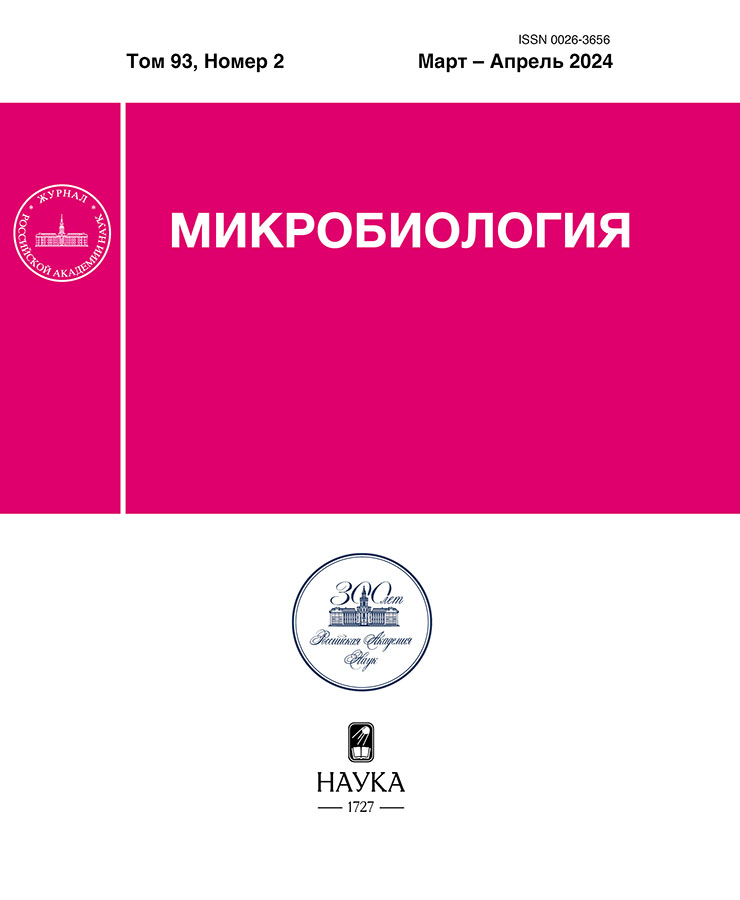The MAMP Peptide Patterns of Bacterial Flagellins and Their Interaction with Plant Receptors: Bioinformatic and Coevolutionary Aspects
- Авторлар: Shchyogolev S.Y.1, Burygin G.L.1, Krasova Y.V.1, Matora L.Y.1
-
Мекемелер:
- Institute of Biochemistry and Physiology of Plants and Microorganisms, Saratov Scientific Centre of the Russian Academy of Sciences
- Шығарылым: Том 93, № 2 (2024)
- Беттер: 179-188
- Бөлім: SHORT COMMUNICATIONS
- URL: https://edgccjournal.org/0026-3656/article/view/655132
- DOI: https://doi.org/10.31857/S0026365624020155
- ID: 655132
Дәйексөз келтіру
Аннотация
Conservative motifs (peptide patterns) determining the elicitor properties of plant-pathogenic bacteria were revealed in amino acid sequences of the flagellins of phytopathogenic, associated, and root nodule microflora. In plant growth-promoting rhizobacteria (PGPR), analogs of one (flg22) out of two (flg22 and flgII-28) specific peptides, characterizing pathogens were revealed. Instead of glycine G18, characteristic of an elicitor, tyrosine Y18 was identified in flg22 analogs of most PGPR, which prevents actuation of the phytoimmunity mechanism against PGPR. Molecular docking with the AlphaFold software complex demonstrated reliability of the interaction between the plant receptor FLS2 and the canonical peptide flg22 and its analogs from a plant pathogen and an Azospirillum. However, in the case of the FLS3 plant receptor only its interactions with the canonical peptide flgII-28 and its analog from the plant pathogen were reliable.
Толық мәтін
Авторлар туралы
S. Shchyogolev
Institute of Biochemistry and Physiology of Plants and Microorganisms, Saratov Scientific Centre of the Russian Academy of Sciences
Хат алмасуға жауапты Автор.
Email: shegolev_s@ibppm.ru
Ресей, Saratov, 410049
G. Burygin
Institute of Biochemistry and Physiology of Plants and Microorganisms, Saratov Scientific Centre of the Russian Academy of Sciences
Email: shegolev_s@ibppm.ru
Ресей, Saratov, 410049
Yu. Krasova
Institute of Biochemistry and Physiology of Plants and Microorganisms, Saratov Scientific Centre of the Russian Academy of Sciences
Email: shegolev_s@ibppm.ru
Ресей, Saratov, 410049
L. Matora
Institute of Biochemistry and Physiology of Plants and Microorganisms, Saratov Scientific Centre of the Russian Academy of Sciences
Email: shegolev_s@ibppm.ru
Ресей, Saratov, 410049
Әдебиет тізімі
- Проворов Н.А., Тихонович И.А., Воробъев Н.И. Симбиоз и симбиогенез. СПб.: Информ-Навигатор, 2018. 464 с.
- Щеголев С.Ю., Тихонов К.С., Андрейченко Д.К. Об опыте инсталляции и использования программного комплекса AlphaFold2 и его оптимизированных версий для определения 3D-структур белков и белковых комплексов // Методы компьютерной диагностики в биологии и медицине — 2022: Сборник статей Всероссийской школы-семинара / Ред. Ан.В. Скрипаль. Саратов: Изд-во “Саратовский источник”, 2022. С. 100‒106.
- Bryant P., Pozzati G., Elofsson A. Improved prediction of protein-protein interactions using AlphaFold2 // Nat. Commun. 2022. V. 13. Art. 1265. P. 1‒11.
- Cai R., Lewis J., Yan S., Liu H., Clarke C.R., Campanile F., Almeida N.F., Studholme D.J., Lindeberg M., Schneider D., Zaccardelli M., Setubal J.C., Morales-Lizcano N.P., Bernal A., Coaker G., Baker C., Bender C.L., Leman S., Vinatzer B.A. The plant pathogen Pseudomonas syringae pv. tomato is genetically monomorphic and under strong selection to evade tomato immunity // PLoS Pathog. 2011. V. 7. Art. e1002130. P. 1‒15.
- Felix G., Duran J.D., Volko S., Boller T. Plants have a sensitive perception system for the most conserved domain of bacterial flagellin // Plant J. 1999. V. 18. P. 265‒276.
- Fliegmann J., Felix G. Immunity: flagellin seen from all sides // Nature Plants. 2016. V. 2. Art. 16136. P. 1‒2.
- Garcia A.V., Charriera A., Schikorab A., Bigearda J., Pateyronc S., de Tauzia-Moreaua M.-L., Evrarda A., Mithöferd A., Martin-Magniettea M. L., Virlogeux-Payantg I., Hirta H. Salmonella enterica flagellin is recognized via FLS2 and activates PAMP-triggered immunity in Arabidopsis thaliana // Mol. Plant. 2014. V. 7. P. 657‒674.
- Gómez-Gómez L., Boller T. FLS2: a LRR receptor-like kinase involved in recognition of the flagellin elicitor in Arabidopsis // Mol. Cell. 2000. V. 5. P. 1‒20.
- Hind S.R., Strickler S.R., Boyle P.C., Dunham D.M., Bao Z., O’Doherty I.M., Baccile J.A., Hoki J.S., Viox E.G., Clarke C.R., Vinatzer B.A., Schroeder F.C., Martin G.B. Tomato receptor FLAGELLIN-SENSING 3 binds flgII-28 and activates the plant immune system // Nature Plants. 2016. V. 2. Art. 16128. P. 1‒8.
- Hu D., Reevesa P.R. The remarkable dual-level diversity of prokaryotic flagellins // mSystems. 2020. V. 5. Art. e00705-19.
- Sun Y., Li L., Macho A.P., Han Z., Hu Z., Zipfel C., Zhou J.-M., Chai J. Structural basis for flg22-induced activation of the Arabidopsis FLS2-BAK1 immune complex // Science. 2013. V. 342. P. 624‒628.
- Thomson N.M., Rossmann F.M., Ferreira J.L., Matthews-Palmer T.R., Beeby M., Pallen M.J. Bacterial flagellins: does size matter? // Trends Microbiol. 2018. V. 26. P. 575‒581.
Қосымша файлдар



















